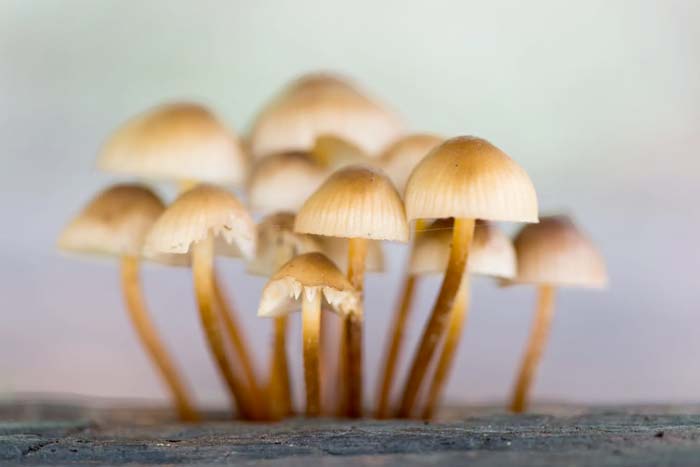Most people do not think mushroom cultivation. We go to the grocery store, grab them from the vegetable department (even though fungi are not plants! ), and leave them there.
However, if you’re interested in producing mushrooms, whether useful, magical, or any other kind of fresh mushroom, you may be asking if the spore or the mushroom came first. We’re not here to take you on a philosophical journey through the fungal equivalent of the chicken or the egg but rather to educate you on the beauty of mushroom spores and how you may start producing them.
What Are Mushroom Spores?
Before we get into the details of cultivating mushrooms, it’s a good idea to define Mushroom Spores first.
Even though mushrooms are often found in the vegetable area of the grocery store and are sometimes grouped with vegetables, they are not vegetables at all. Mushrooms are a form of fungus that belongs to the thallus plant group.
They are a simpler kind of plant that lacks many traits of more complex plant species, one of which is how mushrooms reproduce.
Mushrooms, unlike more advanced plant species, do not produce seeds. Instead, they have “spores,” self-contained cells geared for reproduction. The spores are fertilized as they spread, and when they fall on appropriate material, they form “roots” and grow.
These small one-celled creatures may be found in some of the most inhospitable settings on the planet. The spores germinate or develop from there before the mycelium, or branching cells, form. The fruiting body forms after they branch out before maturing into the mature body.
What Do Mushroom Spores Look Like?
Mushroom spores resemble fine dust and come in a range of hues. Some spores, such as those found in penis envy mushrooms, are dark brown. Some, on the other hand, may be white, cream, crimson, purple, or even (with toxic mushrooms!) green.
If you’ve ever touched a new mushroom cap, you may have seen a puff of smoke or mist emerging from the mushroom. Those are minuscule spores on their way to seek sanctuary amid the earth or the stars.
Spore Cultivation Methods – Prints and Syringes
In the wild, mushroom reproduction is primarily determined by chance and wind – the wind catches the spores, and it’s up to chance that they’re fertilized and find a suitable area to develop. However, you can do it yourself, and since you’re in charge, the process is more predictable and manageable!
Mushroom production needs careful planning. Before you begin, keep in mind that growing using spores may be a difficult task since it needs the person to begin at the very beginning of a mushroom’s life cycle. And as more stages are added, the likelihood of anything controlled or uncontrollable going wrong increases. Tin foil, rather than paper or glass, is an excellent approach to protect against these variables. Tinfoil is more sanitary (since it can be washed with alcohol) and facilitates spore transmission.
How To Cultivate Using Spore Prints
- Remove the stem from the fully formed mushroom you wish to cultivate with care.
- Remove any leftover “skirt” or “frill” at the top of the stem that shields the black spores on the gills.
- Cover the prepared mushroom cap with a small glass container, bowl, or cup, spore side down, on a layer of tin foil.
- For a day, place the mushroom cap face down beneath the glass.
- Depending on the ripeness of the mushroom, valid spore prints might take anywhere from an hour to a day.
- When the timer goes off, remove the glass and open the lid to reveal a spore print on the tin foil/paper.
- Fold the tin foil over the spores and put them in a plastic bag that has been sealed.
- These prints may be kept at room temperature for decades.
- The traditional procedure involves scraping the spores from the print onto a nutrified agar plate.
How To Cultivate Using Spore Syringes
- Steps 1 to 6 are as mentioned above; step 7 is when the transformation starts when utilizing mushroom spore injections.
- Place the spores in sterile water.
- You may purchase sterilized water or create it yourself! To sterilize water, pour it into a covered pan and boil it for at least 20 minutes.
- After combining the sterilized water and spores, inject the spore solution back into the spore syringe for storage.
- You may also inoculate sterilized grain or inject it directly into the substrate with the spore syringe.
Now that you know how to grow mushrooms, it’s easy to see that this is not particularly hard. It just takes a little time and some attention to detail. Add some nutrient-rich material and a dark, warm place in your home, and you should soon have your own crop of mushrooms!
In a nutshell, rather a fruiting body, spore syringes suspend the spores in a solution without destroying them (hence the importance of sterilized water). Spore prints are more like a stamp that can be left overnight and then tucked away for years and years to come. Maybe the fungal prints can be your next white elephant gift!
Where To Buy Mushroom Spores
The above growing instructions show that it is possible to collect mushroom spores from mushrooms. However, if you’re searching for anything in particular, the internet is an excellent place to explore since many websites offer specialty varieties of mushrooms, like psilocybin mushroom spores.
Depending on the type of mushroom you’re after, getting or even high-quality spores is a simple process. To start cultivating your crop of mushrooms, you may also purchase whole kits containing everything you’ll need to get going. You must empty the syringe’s contents onto your plant substrate and wait for it to germinate.
Where can I get some good mushroom spores? Where would you suggest I get some psilocybin spores from? If you need mushroom spores, who do you contact?
We recommend shopping at Fungushead for the highest quality mushroom spores available online. They have many types of psilocybe cubensis syringes and mushroom spore strains.












